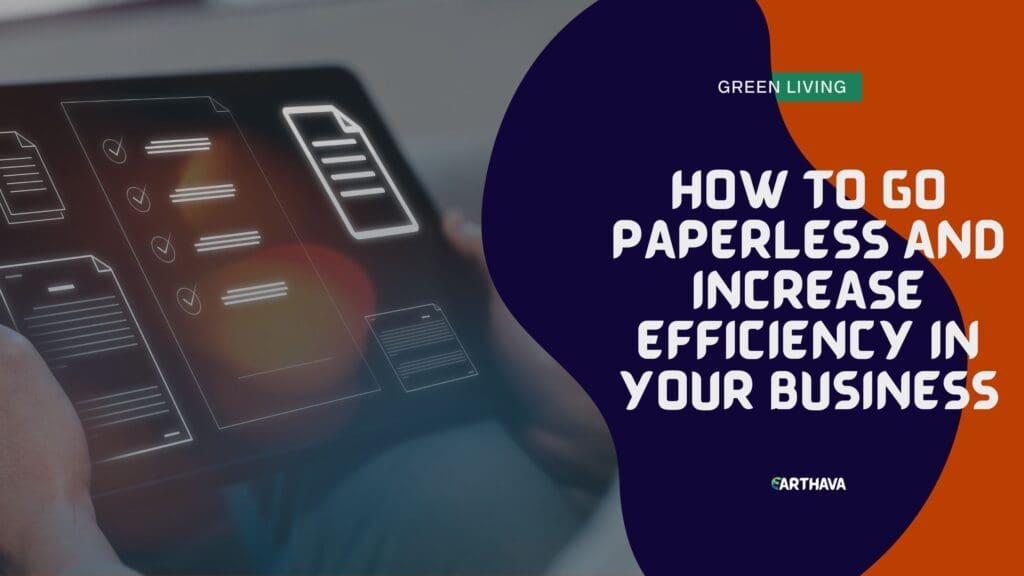Did you know that as much as 50% of business waste is paper? For anyone who is looking to be profitable, wastage should not be in their vocabulary.

Despite knowing this and having access to technology that minimizes paper use, a lot of businesses are having problems with going paperless. Nevertheless, going paperless will help you reduce office waste, save time, and store important documents more securely to ensure that you not only keep critical information away from unauthorized eyes but are also in compliance with data security regulations.
How Much Paper Is Used In USA IN 1 Day

Here is what you need to know about businesses going paperless.
Is it Worth It?
As mentioned earlier, about 50% of a business’s waste is paper. Therefore, by going paperless, you will be reducing your impact on the local landfill. Moreover, running a paperless operation helps support earth-friendly efforts such as water conservation considering it takes about 3 gallons of water to make a single sheet of paper!
From a financial perspective, going paperless will save you a lot of costs. Consider this, the typical office worker in America uses up to 10,000 sheets of paper every year. Additionally, the costs of replacing black ink cartridges thrice a year for a single printer range anywhere between $60 and $120, and between $75 and $160 for color cartridges. Now add the costs of associated stationery such as pens, and you can see that they are expenses you do not need.
Going Paperless: How to Do It

Deciding to go paperless does not mean quitting cold turkey; you need a strategy. You can start by picking either one or all of the following tips and putting them into practice before moving on to others. Here are some tips to help you get started:
1. Incorporate Paperless Document Storage
This is what the cloud is all about. It allows for paperless secure document storage for important files and documents. Apart from ensuring you no longer have to use paper, this type of storage allows for more effective file sharing between staff and customers while eliminating faxing and mail service costs. Additionally, since utilizing the cloud means off-site file storage, you can rest easy knowing that you have complete control over who has access to your business documents.
2. Paperless Meetings
Rather than passing around printed handouts during meetings, start making use of information-sharing technology. All you need is a basic HDMI cable to project slideshow presentations from your computer. When the meeting is over, you can share the presentation with members via email or cloud.
3. Electronic Communication
If you are still sending letters through snail mail, it is time you switch strategies and start utilizing the power of electronic mail. Emails are a more effective means of communication since they reach the addressee instantly thus guaranteeing a faster response. Moreover, you remain with copies of the communication on your device.
You can also utilize text messages when sending memos. Another tip would be to opt for paperless billing for all your utility bills. Also, make use of electronic calendars to schedule calls and meetings.
4. Utilize Scanners and Scanner Apps
So, in your efforts to go paperless, what do you do with the existing paper documents? A good idea would be to scan them into a PDF format then upload it to the cloud. To do this, you can either utilize a printer’s scanner or install a scanning app onto your smart device. Do not leave anything to chance, shred all the paper documents after uploading them. If you insist on having those hard copies, then put them in a safety deposit box in an offsite storage location.
5. Digital Receipts
If you are running a business that gives its customer’s paper receipts such as salons and restaurants, consider switching to a digital format. Customers will especially be grateful since a digital receipt will not fade with time, leaving the client clueless about that transaction. This only adds to your customer service reputation. Additionally, you will not have to spend on ink and paper costs.
6. Energy-Efficient Equipment
For all its advantages, the one potential drawback to going paperless is that the office may start using up more energy since they will be reading documents via electronic devices. This is why you should consider investing in energy efficiency through energy-efficient printers, installing LED lighting, as well as other energy-saving equipment.
7. Least Expensive Equipment
As mentioned above, going paperless will likely mean that you will have to purchase new electronic devices, and it can be costly. It is, therefore, recommended that you lease expensive equipment to help you save on up-front costs as well as repair and maintenance costs.
Benefits of Going Paperless
Enhanced Accessibility
Digital storage allows for easy file sharing between your staff and employees. This is because an electronic search allows you to locate your documents from anywhere on the globe as you have the internet.
Enhanced Security
The government is becoming stricter regarding how consumer data is handled. Physical documents are prone to getting into the wrong hands. This is why it is necessary that you convert them to digital documents and then store them on secure off-site servers.
This not only makes for easier data handling but also ensures that you are in line with the CCPA compliance guidelines. These guidelines dictate how consumer data should be handled.
Better Customer Service
Dealing with digital documents allows for more effective customer service since you can bring up all their relevant data with no hassle.
Enhanced Productivity
Your staff will stop wasting time handling and printing physical documents and instead direct that focus on more productive tasks.
Enhanced Flexibility
Since you will have all your data saved online, you and your employees will not have to work at the office primarily. Fewer individuals at the office mean lower energy costs.
Cost Savings
As mentioned earlier, you will be able to save significantly on costs associated with dealing with paper. This includes stationery, printer, and ink costs.
Going paperless is one of the easiest ways of promoting environmental conservation efforts. Moreover, it adds a layer of security to your data because you get full control of who can access what documents. The cost savings you make are just an added bonus. Utilize the above tips if you are looking to go paperless.


